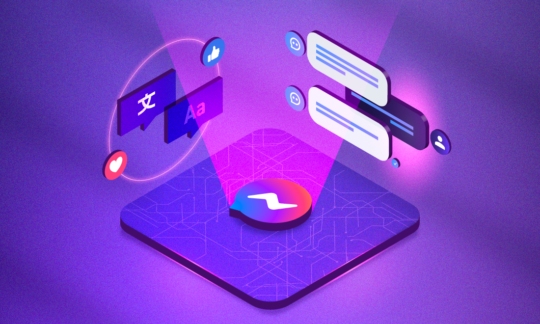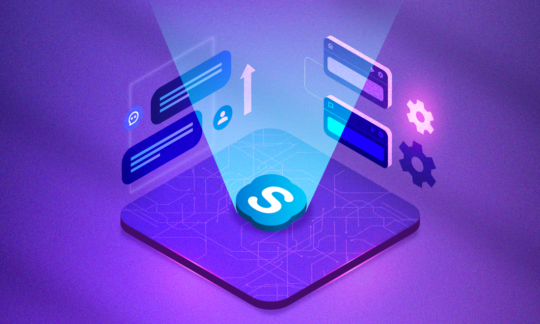Chatbots as Brand Touchpoints: Improving Brand Communication Through Virtual Assistants
Since the dawn of the age of contemporary salesmanship (also known as the popularisation of advertising), brands in every industry out there have been pondering one question more than most others: how do I expand my customer base? This question continues to be relevant, especially in today’s rapidly evolving CX landscape. Smartphones and the internet have made us more connected than ever before, and certainly one of the advantages of this fact is more ways of communication, and in turn, more ways to source leads, increase sales, and generate profit. One such way that has gained traction recently involves chatbots.
Chatbots are a virtual Swiss army knife in terms of brand development. They can be programmed to do a great many things, and not just for the sake of customer service tasks like answering questions or providing basic information. By integrating chatbots into the marketing strategy, brands can grow their digital presence, establish themselves on the market as a separate, unique entity, and even reap the benefits of opening up new potential revenue streams.
So how can chatbots function as a touchpoint for your marketing purposes? And can they really increase your sales and exposure among your customers? Keep reading for a deep dive into the topic.
Table of contents
- A New Frontier for Brand Development
- From Omnichannel Marketing to Omnichannel Chatbots
- Empowering Customer Service Teams
- Chatbot as a Wingman for Your Brand
- Humanising the Brand Experience through a Chatbot Persona
- Enhanced Marketing & New Revenue Streams
- Continuous Analysis, Continuous Improvement
- Implement an AI Chatbot as a Brand Touchpoint
- Article Summary
A New Frontier for Brand Development
According to McKinsey, word-of-mouth marketing remains one of the most popular factors that influence clients before they decide to make a purchase. Therefore, it’s only a natural conclusion that the more positive and recommendable your brand experience is, the better your chance of growing your business. Mend your garden, and the butterflies will come.
But even if you had the greenest of proverbial thumbs, sometimes another pair of hands at work really makes a difference. This is where chatbots come into play, and they really are the star player here. By providing 24/7 service, they’re practically a perfect blank canvas for you to imprint the exact image you want your brand to portray – a true, virtual brand ambassador, who can upsell to as many clients as you can imagine while building up your business branding.
From Omnichannel Marketing to Omnichannel Chatbots
Let’s imagine your customer has encountered some sort of problem with the product or service you provide. Their reservation fell through, or maybe the order that was scheduled for delivery 2 days ago still hasn’t come. How would your customer try to resolve this matter?
If you answered “by calling our customer support line,” you’re not wrong, but you’re not necessarily correct either. 71% of customers are willing to use messaging apps to get customer assistance, presumably because it equals the fastest service. Time is money, after all.
It just so happens that chatbots can be easily integrated into many different channels, be it social media, messaging apps like WhatsApp or Facebook Messenger, or even call centres in the form of voicebots. This means your customers can interact with a virtual assistant, purposefully designed to communicate your tone of voice and brand personality. And you don’t need to limit your customer to only one specific method of contacting your business.
Empowering Customer Service Teams
When it comes to handling customer requests, Customer Service agents can greatly benefit from offloading repetitive tasks to focus on more complex activities. And with more than 65% of people expecting customer service to be better, more convenient, and more efficient than just a few years ago, helping your agents stay on top of their game has never been more crucial.
Additionally, chatbots offer consistent messaging, meaning the identity of your brand remains constant throughout every conversation. Sure, they won’t replace real human-to-human interaction, but it’s still a great way to inject the personality of your brand into customer service and help maintain a positive reputation. Plus, with some of the tools out there, you can build advanced AI-based chatbots that don’t even feel like AI at all.
Example: Rita, BankSouth’s digital assistant, received excellent feedback from employees as well as customers within the first three weeks of implementation. Customers appreciate that they can obtain responses at any time of day or night, seven days a week, and employees like that Rita can handle many up-front queries. According to Kasisto, the digital assistant increased customer digital adoption by more than 20%, making the marketing department’s job easier by recruiting and retaining new customers.
Chatbot as a Wingman for Your Brand
Putting it all together, a clear picture starts to form. All the elements mentioned so far can help you achieve an excellent level of customer service, circling back to the importance of word of mouth and being recommendable. And we’re not even finished!
One aspect worth our attention is personalisation. If programmed to do so, the chatbot will always remember who it speaks with, store information for future use, and come up with offers and solutions tailored exactly to the needs and preferences of each particular client. If a business shows it’s ready to welcome its customers with open arms and a friendly smile, customers are bound to come back, building brand loyalty. With 56% of customers staying loyal when they feel catered to, it’s another indisputable advantage of implementing chatbots as a brand touchpoint.
Humanising the Brand Experience through a Chatbot Persona
Since chatbots are so thoroughly programmable and don’t come out of a factory-made box, they can be freely molded by training them on selected language models to have them take on any kind of personality. This kind of digital marketing strategy offers yet another way for a business to distinguish itself from its competition.
The exact chatbot persona to create will naturally vary, depending on industry needs. Fashion brands like Victoria’s Secret or Tommy Hilfiger, for example, have created upbeat and casual chatbots. Others, such as Burberry or Louis Vuitton, chose a more professional chatbot persona to stay true to their brand values and preserve the aura of luxury and opulence that surrounds them. In any case, a chatbot equipped with its own personality provides a more engaging and memorable experience, reinforcing brand recall.
Conversely, when the situation gets sensitive in more serious industries like banking, your chatbot can seamlessly slip into the role of a qualified professional, further solidifying the brand’s trust and credibility. It’s got to be said – chatbots feel at home in the banking sector, especially once you investigate their results and ability to, for instance, save between $0.50 and $0.70 per customer interaction.
Enhanced Marketing & New Revenue Streams
Releasing a chatbot doesn’t just come with a slew of improvements in your customer service and a much greater degree of personalisation. These digital assistants can also be used as the newest addition to your sales team, and boy are they talented! This report from 2019 found that chatbots can increase sales by an average of 67%. That’s an astounding amount of profits to rake in from audiences you previously didn’t even know were accessible.
Consider this: your actual staff members only work up to 8 hours a day, after which they clock out and that’s all the business you can do for that day. Luckily, your physical presence is separate from your business’s digital presence, and chatbots are active all the time. Any customers who were at work or otherwise unavailable themselves throughout the day and who want to check out your business can interact with the chatbot during off hours and still make purchases, become new subscribers, or simply get the help they need and be satisfied with the service. In addition, the chatbot can promote newly released services by keeping customers up to date whenever it interacts with them, extending your marketing reach beyond just your website, social media presence, and email blasts.
Finally, because chatbots are continuously active, observing and analysing the data they gather during customer interactions can paint a picture of who these new and existing clients are, what they need, and how they can be reached. When used and interpreted correctly, this data can potentially create a wealth of new leads and growth opportunities.
Continuous Analysis, Continuous Improvement
Last but not least, let’s not forget the chatbot’s ability to collect feedback from customers. User feedback forms the stable cornerstone of business, and not without reason. In one report, Barclays states that 85% of small and medium enterprises have found feedback beneficial to their business, and in 70% of cases, releasing this information publicly attracts even more customers.
Since they interact with the client base every day across potentially millions of conversations and flows, chatbots are in the perfect spot to gather information from the source directly and indirectly to improve the brand experience.
For instance, direct feedback can be collected by programming the chatbot to send a satisfaction survey to the client to rate basically anything part of the service or client-facing process, from the products on offer to the quality of the customer assistance itself. Indirect feedback can help improve various processes or features, though it predominantly pertains to the chatbot and its functionality. By monitoring points along the user journey where friction occurs when the chatbot gets stuck, you can adjust and augment its logic flow to reduce the chances of this happening in the future.
Example: After releasing their AI bot Eva across their website, HFDC bank in India received great feedback. They rapidly recognised a customer-driven shift toward self-service.
Implement an AI Chatbot as a Brand Touchpoint
The myriad of ways chatbots come in handy when growing your brand speaks for itself. Implementing an AI-powered chatbot solution to function as another brand touchpoint can achieve tremendous results in growing your business and increasing conversion rates. Plus, chatbots will only get better with time as the technology improves at resembling real human conversations.
Not sure how much AI chatbots can do for your brand development? Take a look at SentiOne Automate, an intuitive platform designed to give you a competitive edge through the newest generation of AI assistants. Book a demo today, or simply use our ROI calculator to find out how much your business will save with Automate.
Article Summary
This article explores the use of chatbots as brand touchpoints to enhance brand communication and improve customer service. Chatbots offer a versatile tool for brands to expand their digital presence and establish themselves as unique entities. They can be integrated into various channels, including messaging apps and social media platforms, providing 24/7 service and personalised interactions. Chatbots empower customer service teams by offloading repetitive tasks and maintaining consistent messaging. They also offer the opportunity for brands to create a distinctive chatbot persona that aligns with their values and engages customers. Furthermore, chatbots can enhance marketing efforts, increase sales, and generate new revenue streams. They gather valuable feedback and data, which can be used to improve the brand experience and identify growth opportunities. Overall, implementing chatbots as brand touchpoints can have a significant impact on business growth and customer satisfaction.



